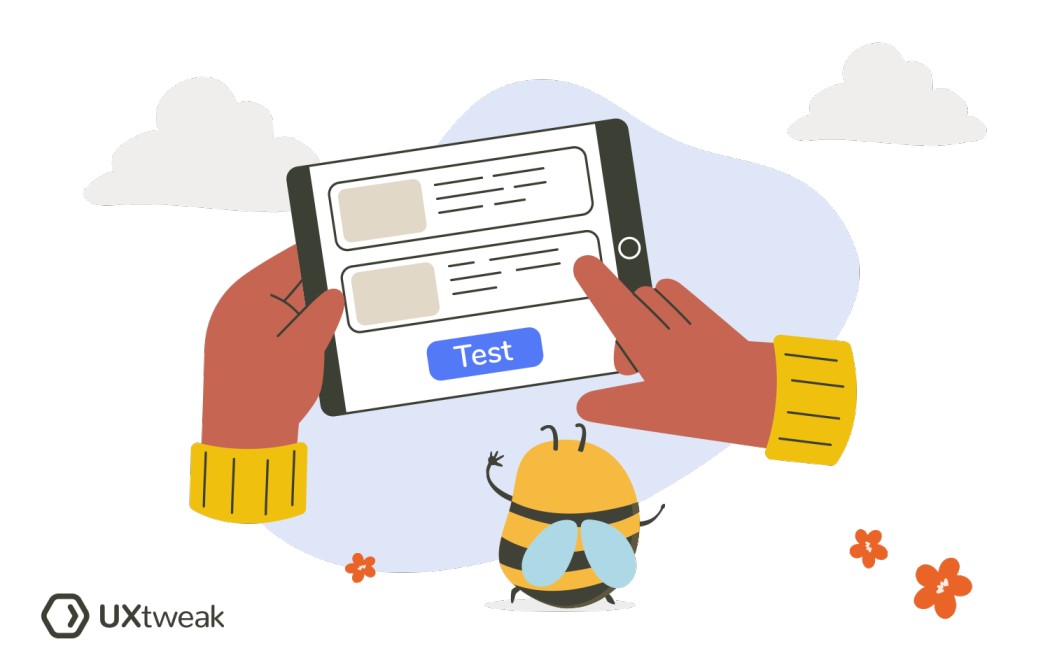When to create a low-fidelity prototype?
Creating a low-fidelity prototype will be especially useful at the beginning of the UX design process, when you are brainstorming and exploring different concepts.
Before investing significant resources in developing a high-fidelity prototype or final product, it is important to conduct prototype user testing. Low-fidelity prototypes can be used to simulate user interactions and gather feedback on accessibility and functionality. This can help to save precious time and resources.
Low-fidelity prototypes are equally beneficial in the iterative design process. They allow designers to explore and test additional changes, evaluate different solutions, and make informed design decisions based on user feedback and insights.
Benefits of a low-fidelity prototype
Using a low-fidelity prototype has several advantages, here are some of them:
- Early feedback: By creating a low-fidelity prototype, you can gather early feedback from stakeholder and target audience by using prototype user testing . This early validation helps identify potential usability issues, gather insights, and make informed decisions.
- Cost – effectiveness: Low-fidelity prototypes can be created quickly and inexpensively using readily available materials such as paper, cardboard, or digital prototyping tools.
- User – centered design: Low-fidelity prototypes facilitate user involvement and testing in the design process. By observing users interacting with the prototype, designers can understand their needs, preferences, and pain points, which helps inform design improvements.
- Faster development cycles: By incorporating low-fidelity prototyping early in the design process, you promote an iterative and agile approach. Rapid iterations based on user feedback can lead to more efficient development cycles and a shorter time to market.
How to create a low-fidelity prototype?
Creating a low-fidelity prototype doesn’t require sophisticated tools or extensive resources. Here’s a step-by-step guide on how to create a low-fidelity prototype:
- Define your goals: Clearly define the purpose and goals of your prototype. What specific aspect of the design or concept do you want to test or communicate?
- Identify key features: Identify the essential features and interactions that need to be represented in your prototype. Focus on the core functionality rather than detailed aesthetics.
- Start sketching: Begin by sketching rough ideas and layouts on paper or online. Use simple shapes, lines, and labels to represent different elements of your design. It doesn’t need to be precise or visually appealing at this stage. The goal is to communicate the basic structure and flow of the design.
- Test and gather feedback: Use the low-fidelity prototype to conduct user testing or gather feedback from stakeholders. Observe how users interact with the prototype and ask for their thoughts and impressions. Make note of any issues or areas for improvement.
Iterate and refine: Based on the user feedback received, make necessary changes to the prototype. Modify and iterate on the design to address any identified issues or incorporate suggested improvements.
FAQ
Low-fidelity prototypes prioritize speed, simplicity, and early-stage feedback, while high-fidelity prototypes emphasize visual fidelity, accuracy, and detailed user interactions.
Low-fidelity prototypes provide a cost-effective and efficient method for testing preliminary design ideas. By creating a rough outline of your concepts, low-fidelity prototypes allow you to identify potential design flaws at an early stage, enabling you to eliminate ineffective ideas.




